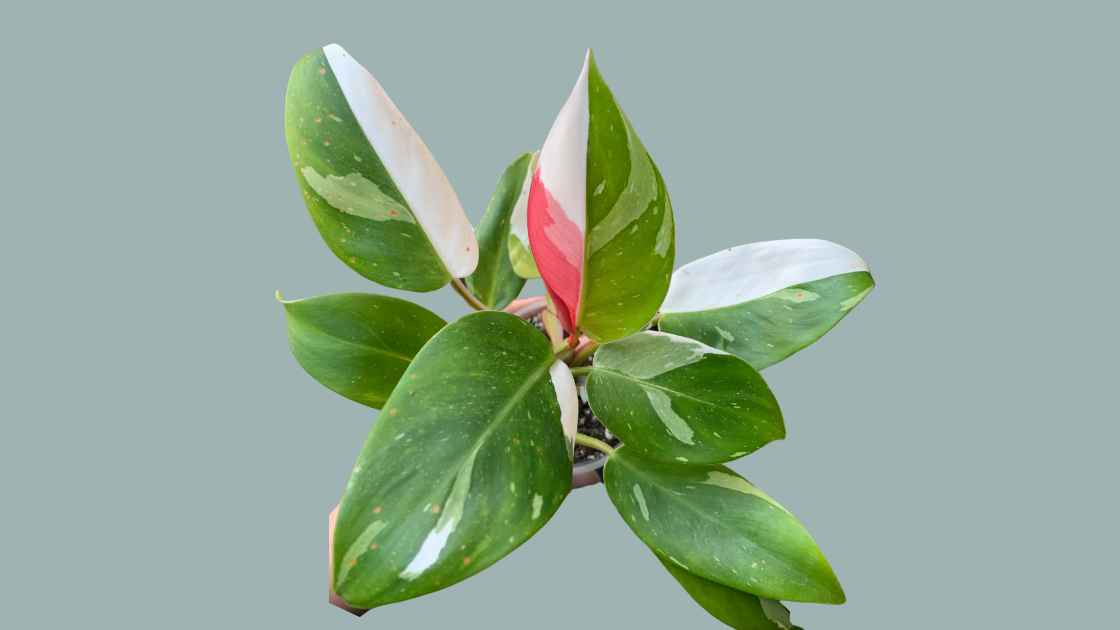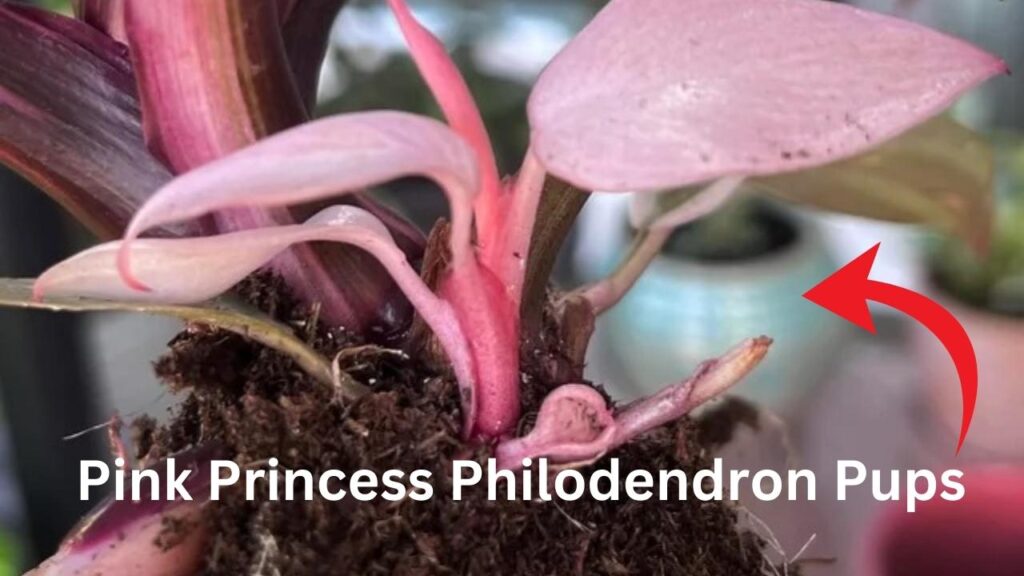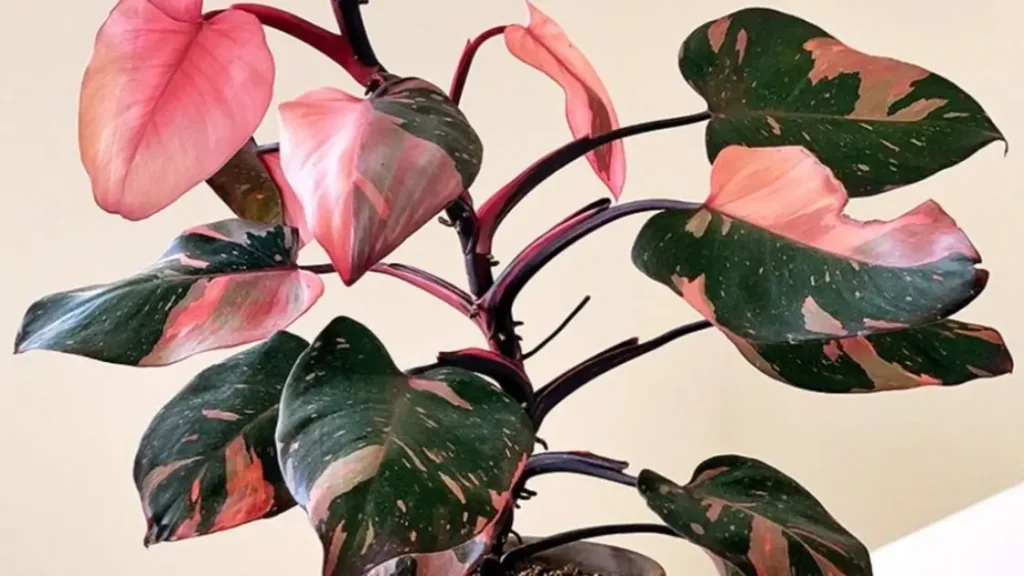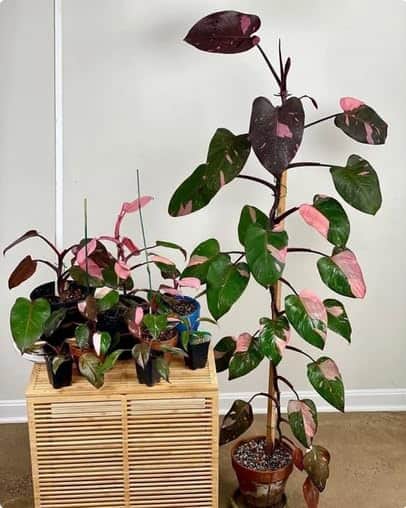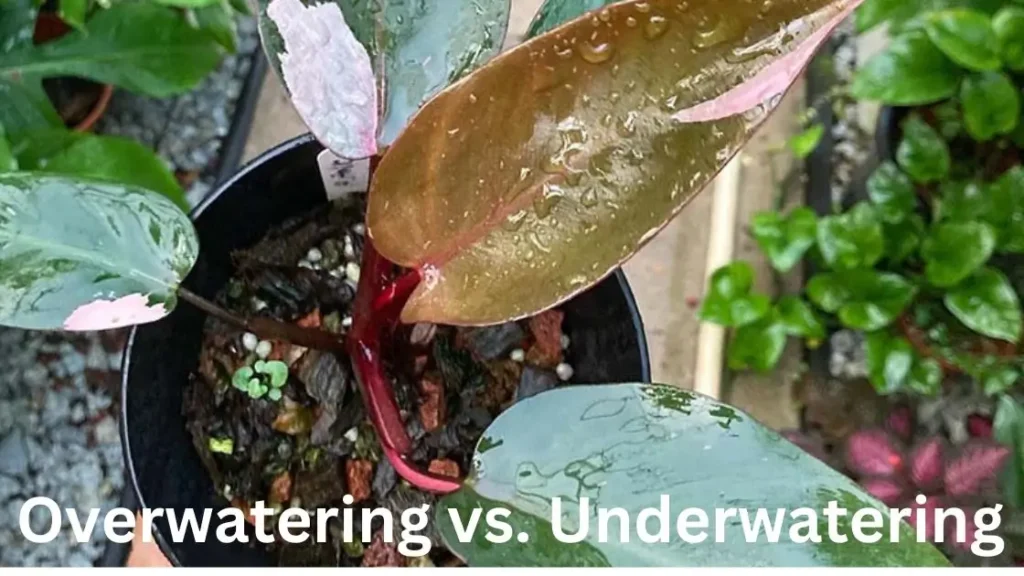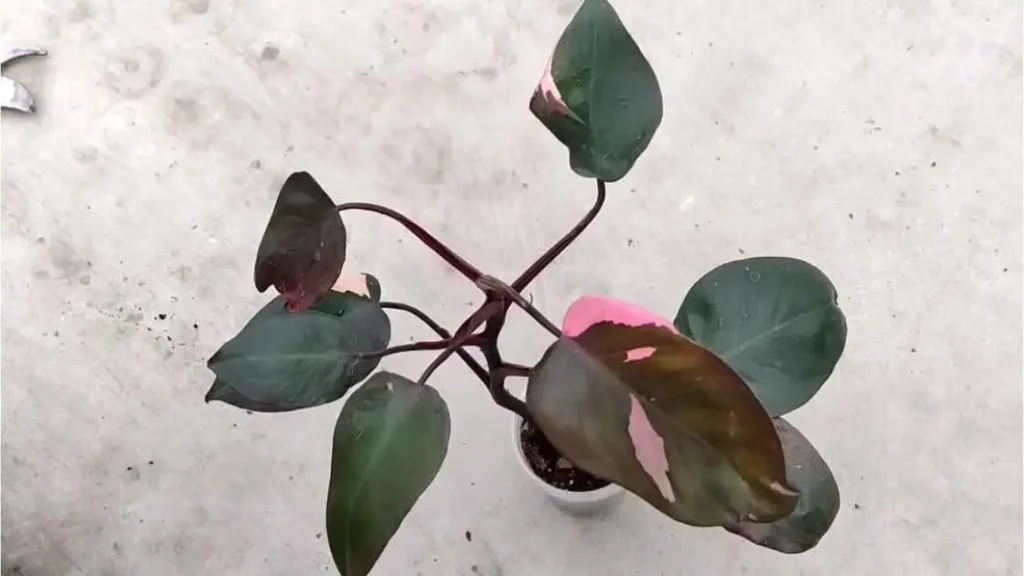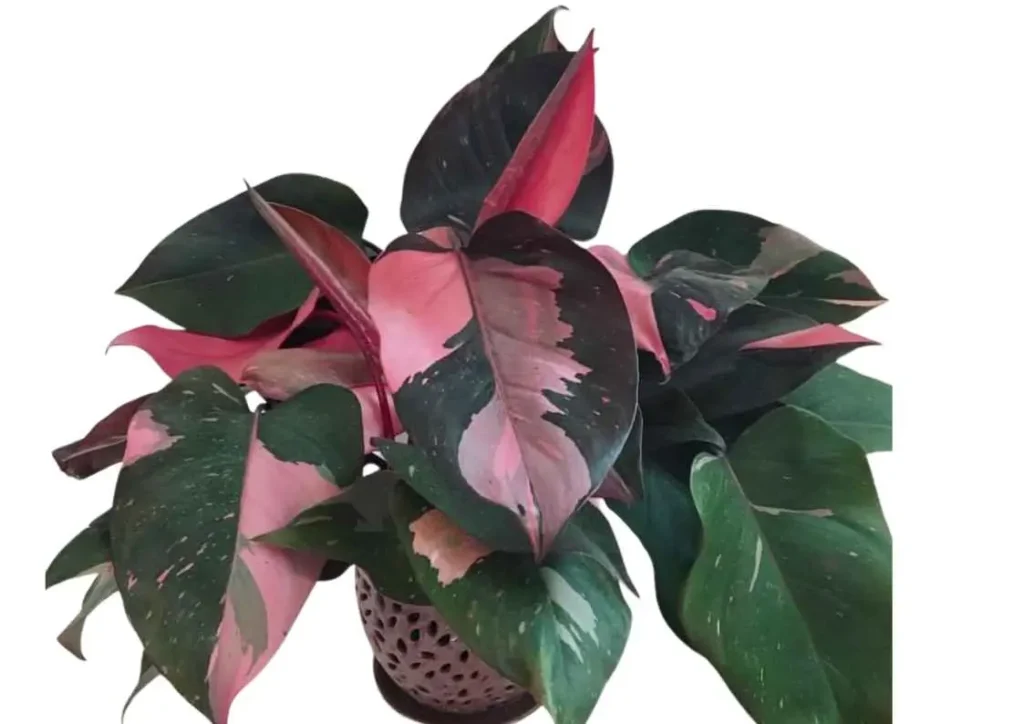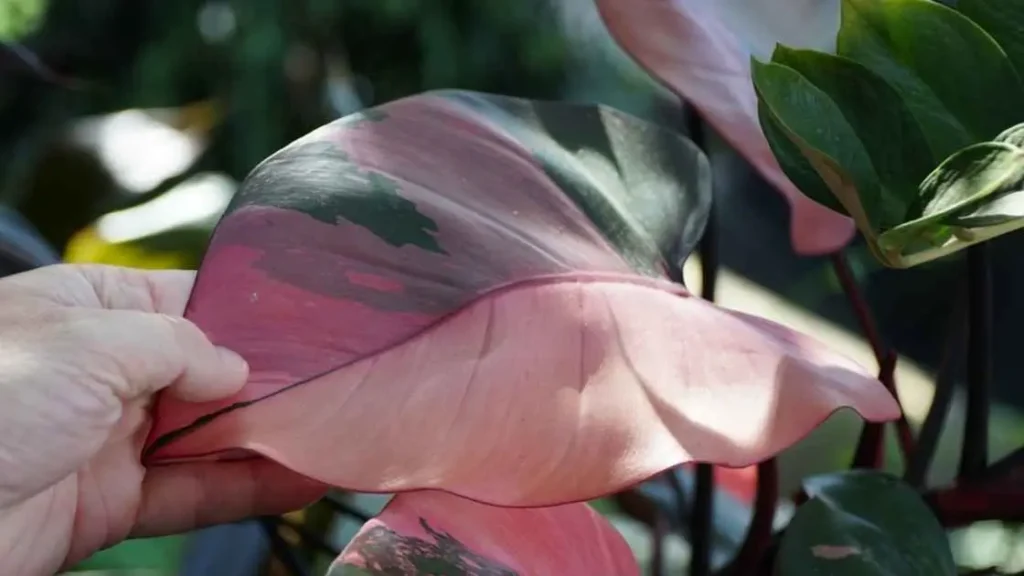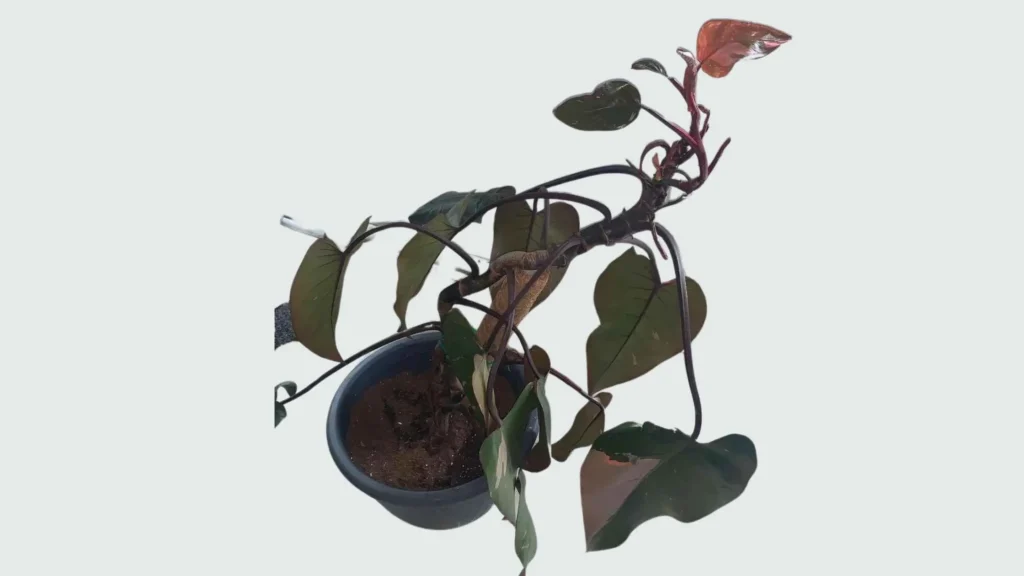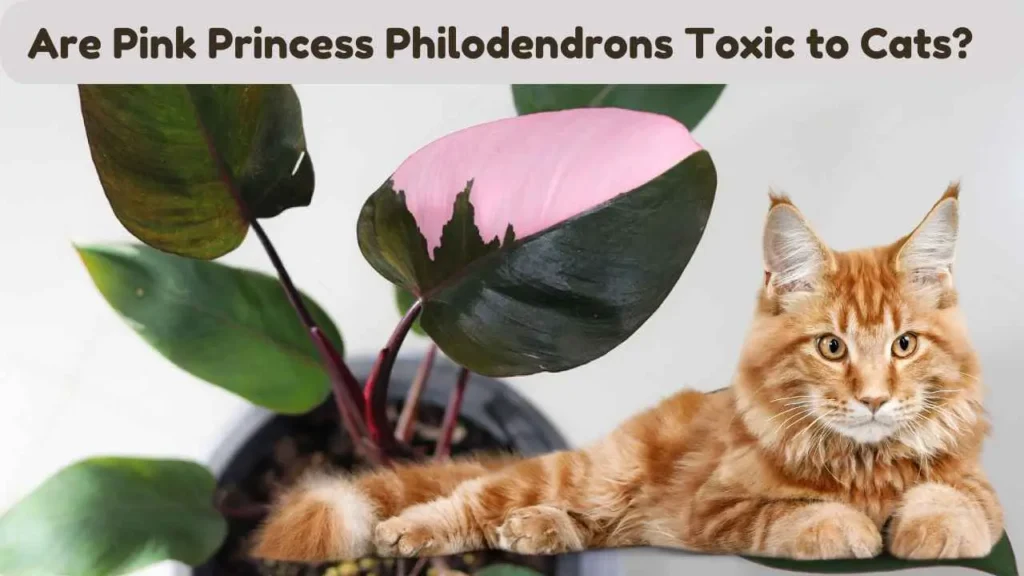Table of Contents
ToggleThere’s a special joy in noticing something new on your houseplant. I remember when I first saw it—my White Princess Philodendron, usually green and white, had grown a pink leaf. Yes, a pink leaf! It stood out like a rare gem among the other leaves.
As a plant lover, this was thrilling. It felt like my Philodendron was rewarding me for all the care I had given it. But then, questions filled my mind:
- Why did this happen?
- Is it good or bad?
- How can I keep this pink leaf from disappearing?
If you’ve had a similar experience, or if you’re just curious about caring for your White Princess Philodendron, I have some tips for you. Let’s find out what causes these beautiful pink leaves and how to keep your plant healthy and colorful.
Why Does a White Princess Philodendron Grow Pink Leaves?
Let’s talk about why my White Princess Philodendron grew a pink leaf. This plant is famous for its mix of green, white, and sometimes pink leaves. The pink is rare and special, so when it shows up, it’s exciting.
Causes of Pink Leaves:
- Genetics: Pink leaves usually come from the plant’s genetics and how it’s cared for.
- Chlorophyll Mutation: The pink color happens because of a mutation. These areas have less chlorophyll, which gives them their unique look.
- Care Conditions: The right care, like proper light and humidity, helps encourage the pink color.
In my case, the pink leaf appeared because I took good care of the plant, and maybe I got a bit lucky:
- Bright, Indirect Light: I made sure the plant got plenty of bright, indirect light. Without enough light, the plant might lose its pink color and turn mostly green. But too much direct sunlight can burn the leaves, especially the pink and white parts.
- Humidity: I keep my White Princess in a room with moderate to high humidity. This helps keep the plant healthy and its colors bright.
But remember, the pink leaf might not last. The plant could grow green or white leaves again, depending on how it’s cared for in the future. That’s why it’s important to keep providing the right environment to maintain this beautiful color.
How to Keep the Pink Variegation in Your Philodendron
Now that my White Princess Philodendron has a pink leaf, I want to keep it that way. The pink adds a unique touch, and I’m focused on giving my plant the best care to encourage more colorful leaves.
Key Care Tips:
Light: My White Princess sits near an east-facing window. It gets bright, indirect light most of the day. This kind of light helps keep the colors without burning the leaves.
Tip: Avoid direct sunlight during the hottest part of the day to prevent yellowing or burning.
Watering: I’m careful with how I water my Philodendron.
- Overwatering: Can cause root rot, which is a big problem.
- Check Soil: I check the top two inches of soil. If it’s dry, I water it. I also make sure the pot has good drainage to avoid standing water.
Humidity: Tropical plants like the White Princess do best in humid places.
- Humidity Boost: I’ve put a tray with pebbles and water under the pot to increase humidity. If you live in a dry area, using a humidifier can help keep the right humidity levels.
Soil: I use a well-draining mix with orchid bark, perlite, and peat moss. This mix holds some moisture without getting too wet, which helps prevent root problems.
Repotting: I repot the plant every couple of years to refresh the soil and give it more room to grow.
Feeding: I fertilize my White Princess once a month during the growing season (spring and summer). I use a balanced liquid fertilizer, diluted to half strength.
- Nutrients: This gives the plant the nutrients it needs for healthy, vibrant leaves without overwhelming it.
By following these tips, I’ve kept my White Princess Philodendron healthy, and I hope it will keep surprising me with more pink leaves.
How to Encourage More Pink Leaves
If you want more pink leaves on your White Princess Philodendron, focus on light and the environment.
Light Balance:
Bright, Indirect Light: Balance is key. My White Princess thrives in bright, indirect light.
Tip: Rotate the plant every few weeks. This helps all sides get equal light, keeping the growth even and the colors balanced.
Grow Lights: If your home doesn’t get enough light, consider using grow lights, especially in winter.
Humidity:
Ideal Humidity: Keep your plant in a room with about 60% humidity. This level is perfect for the plant.
Low Humidity Risk: Low humidity can dry out the leaves and dull their color.
Temperature:
Temperature Range: Keep the room temperature between 65-75°F (18-24°C). This range is ideal for the plant.
Avoid: Cold drafts or sudden temperature changes. These can stress the plant.
By focusing on these factors, you can enhance the pink color on your White Princess Philodendron and keep it looking vibrant.
What If the Pink Leaves Turn Green Again?
It’s disappointing when the pink leaves on a White Princess Philodendron turn green again. But don’t worry—there are ways to fix it.
Troubleshooting Tips:
Lack of Light: The most common reason is not enough light.
Solution: Move your plant closer to a light source. If natural light is limited, try using a grow light.
Humidity Issues: Dry air can stress the plant and reduce the pink color.
Solution: Increase humidity by misting the plant or using a pebble tray. Grouping plants together can also help create more humidity.
Overwatering: Too much water can cause problems.
Solution: Check the soil to make sure it’s not too wet. Let the top two inches of soil dry out between waterings.
Nutrients: While fertilizing is important, don’t overdo it.
Solution: Use a balanced liquid fertilizer, diluted to half strength, to encourage pink color.
By focusing on these factors—light, humidity, watering, and nutrients—you can bring back the beautiful pink color in your White Princess Philodendron.
The Rarity and Value of Pink Variegation in White Princess Philodendrons
When I saw that pink leaf, I knew it was something special. Pink variegation in a White Princess Philodendron isn’t just pretty; it’s rare and valuable. Variegated plants are often more popular, and the rarer the variegation, the more people want the plant.
Value of Pink Variegation:
Rarity: The White Princess Philodendron is already a rare houseplant with its mix of green, white, and pink.
Unpredictability: The pink variegation is highly valued because it’s uncommon and unpredictable.
Collector’s Item: In the world of plant collectors, a White Princess with regular pink variegation can be worth more. Collectors especially want these unique plants for their collections.
For me, though, the real value is in the joy of discovering that pink leaf. It reminds me of nature’s beauty and makes caring for my White Princess even more rewarding.
Conclusion
Seeing that first pink leaf on my White Princess Philodendron brought pure joy. It felt like a reward for all the care I’ve given this plant. But more than that, it reminded me of the amazing and unpredictable nature of plants.
Caring for a White Princess Philodendron isn’t just about following rules. It’s about watching, learning, and adapting to what your plant needs. When you do this, the results can be stunning, like the surprise of a pink leaf.
So, if your White Princess has grown a pink leaf, take a moment to appreciate its uniqueness. With the right care, you might see more of these delightful surprises in the future.
FAQs
Why did my White Princess Philodendron grow a pink leaf?
The pink leaf is likely due to a mix of genetics and good care, like the right light and humidity. This variegation is rare and adds to the plant’s beauty.
How can I keep the pink variegation on my Philodendron?
To keep the pink variegation, give your plant bright, indirect light and high humidity. Proper watering and good soil drainage are also important.
Is it normal for the pink leaves to turn green again?
Yes, it’s normal for the variegation to change depending on the plant’s environment. If your pink leaves are turning green, try adjusting the light, humidity, and watering routines to encourage the pink color to return.
Can I propagate a White Princess Philodendron with a pink leaf?
Yes, you can propagate a White Princess Philodendron from a cutting that includes a node. However, new plants may not always guarantee pink variegation, but with the right care, you can encourage it.
What’s the difference between White Princess and Pink Princess Philodendron?
The White Princess has green, white, and sometimes pink variegation, while the Pink Princess typically has more pink and burgundy colors. The stem color also helps differentiate them—White Princess has green or white stems, while Pink Princess often has dark or burgundy stems.
Related
Discover more from Pink Philodendron
Subscribe to get the latest posts sent to your email.

